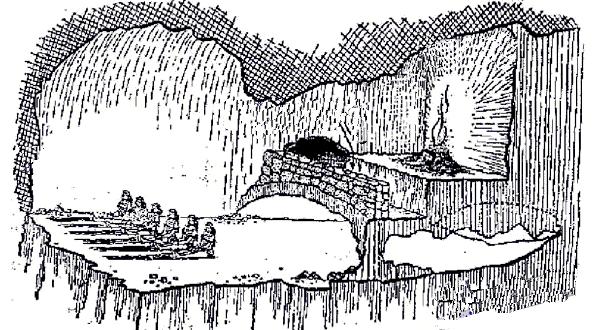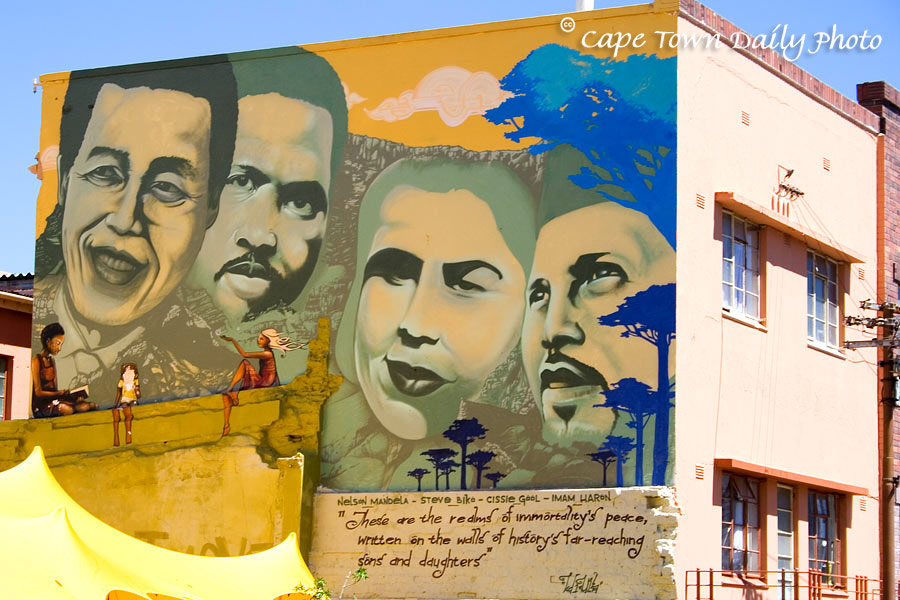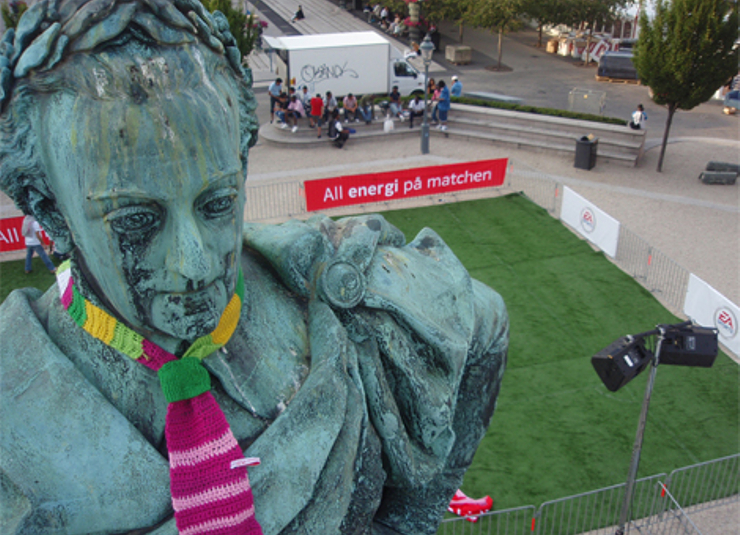In pairs and a triplet, read http://www.probsolv.com/systemic_thinking/Systemic%20Thinking.pdf
In your groups write not more than one page answering:
How does the making of John's portrait embody the principles of systemic thinking?
Hand in: 25 October 8:30 am
email your script to marksplendid@gmail.com
Tomorrow we will have a written feedback session
Tuesday, October 23, 2012
Tuesday, October 16, 2012
Monday, October 15, 2012
Saturday, October 6, 2012
Thursday, October 4, 2012
Systems Theory
Russell Ackoff http://www.youtube.com/playlist?list=PLoHSL9k934usZFW2upzcElsy7Tss-Dunj&feature=mh_lolz
I have used the above lectures to begin to understand this theory
Analytical approach to understanding
- Take it apart
- Try to understand what the parts do individually
- assemble the parts (aggregate) to gain an understanding of the whole
Systemic approach to understanding (Systems Thinking)
- What is this a part of
- Explain behaviour of the containing whole
- Dis-aggregate the understanding of the containing whole, by identifying the role or the function of what I'm trying to explain in that whole.
Tasks for next class 18 October
- find your partner, there are six groups (5 pairs and 1 triplet)
- As a WHOLE group identify the essential parts of your Jewellery Design experience (e.g. workshop, drawing, design, cleaning, metal, forging etc.)
- In your group decide what materials best embody that part (e.g. if bench is the essential part, the materials will be tools)
- make a blog and email the address and an email address for your particular pair/group. Email these addresses with your names to marksplendid@gmail.com
- begin to document your entire process; your final hand in will include a comprehensive documentation of your entire process
- in your group (and this is to also be on your blog) come up with an example which you will present in our next class (18 October) which elucidates the Systemic method of understanding and explanation.
Brief: Hand-in: 25 October 2012, 8:30 am
Learning Outcomes:
- To gain an embodied understanding of Systems Thinking
- To work in a group
- To develop competence in social media formats
Task: In your group make a part of a picture which together with the other groups in your class forms a larger whole image. Include a minimum of one page of writing explaining how this project embodies the principles of Systemic thinking. Comprehensively document your entire processes on your group blog. This documentation includes the various homework tasks you need to perform building up to your final hand-in.
Guidelines:
- use the above you-tube links
- make sure you have done your homework for next lesson, each group has 10 minutes to present, and your presentation is part of your final mark
- start documenting immediately, use video, images, etc.
- make your blog engaging and user friendly; find a good proportion with quantity of information and length ( ie. don't make it too long, use relevant images[be concise] develop a flow)
- make sure I have received your groups addresses by checking the email and blog page on http://designtheorytwo.blogspot.com/p/blog-list.html
Assessment Criteria:
- What is the level of engagement in the making of the part of the drawing? (relevant choice of materials, accuracy in the drawing)
- What is the level of professionalism of the blog? (clear, concise, flowing and engaging)
- What is the level of understanding of the theory? (this is the presentation part; example used and ability to explain AND the written explanation )
- What is the level of the overall attitude towards the project? (participation, enthusiasm, effort)
Wednesday, October 3, 2012
What is Systems Thinking?
System Theory
Systems Thinking
Complexity Theory
Synergy
Holon
Holism
http://www.youtube.com/playlist?list=PLoHSL9k934usZFW2upzcElsy7Tss-Dunj&feature=mh_lolz
Thursday, August 30, 2012
Other
 |
http://www.stevenson.info/exhibitions/muholi/index2012.htmlCAPE TOWN26 July - 1 September 2012 ZANELE MUHOLIMO(U)RNING
STEVENSON is pleased to present MO(U)RNING, a solo exhibition by visual activist and photographer Zanele Muholi.
For Muholi, MO(U)RNING evokes death but also suggests the cycle of life as morning follows night. Life and death, love and hate are some of the antitheses that appear throughout her work.
In April this year, Muholi's Cape Town apartment was burgled in what was apparently an attack directed at her visual activism. The lost material was an extensive archive of photographic work, videos and texts documenting hate crimes in South Africa and gender issues in Africa. Among this material was the Queercide project, created by Muholi to denounce and record hate crimes and atrocities committed against lesbian, gay, bisexual, transgender and intersex (LGBTI) people.
The loss of this material raised many questions for Muholi. What happen when such images disappear or when a collection of testimonies is erased?
In MO(U)RNING, Muholi presents elements of her documentation that were not lost, together with new work realised in recent months. The exhibition will include new and recent photographs from her Faces and Phases series of portraits and herBeing series. Her multiple award-winning documentary Difficult Love, currently on view at Documenta 13 together with Faces and Phases, will be screened for the first time at the gallery. Photographs of crime scenes and new video works will also form part of the exhibition.
Her work gives public life to a community, its joys, traumas, fights and daily existence. She uses the power of visual material, offered by photographs and film, to affirm existing realities and expose truths and the cruel aspects of 21st century South African society where loving can be dangerous.
|
By next week 5 September:
- Design a system where by you encounter your Other
- Post this on your blog
Reflect and write on:
- How do I move from stereotyping into actual engagement?
- What activities can I enter in with the Other, which seem natural?
- How will I record the experiences?
- What are my ethical responsibilities?
Please note we will be having Theory in our next history time slot 5 September
Friday, August 17, 2012
Who are you?
The intention for this course is to mine deeper levels of creativity. We do this by tracking specific questions in order to arrive at our authentic selves.
Who are you? prompts us to look at social blind-spots. These are groups of people who 'we do not see'. [Theory U (C. Otto Scharmer) http://www.ottoscharmer.com/publications/summaries.php]
The blind-spot potentially holds a store house of creativity. It requires courage and the help of others to look at it.
Our project so far:
- establish your group (facebook and in class) and work with this group as support for you to explore the terrain
- establish your blog and begin to document your process
- at this stage establish:
- the social area you do not see (remember these are people you do not see as individuals, there is a tendency to group, generalise, and stereotype)
- explore the feelings which arise when contemplating this 'group'
- write about this in your journal
- keep your journal private
- your blog is public documentation, not personal process
- explore these feeling responses for the next week
- on 17 August I will post the next part of the process
Wednesday, June 6, 2012
Persephone and The Cave (Plato)
The Cave (Plato): Directors and Producers
- Juliana
- Hubert
- Keith
- Simphiwe
- Roxanne
- Carlen
- Gillian
Persephone: Directors and Producers
- Naomi
- Luke
- Eileen
- Lesley
- Sam
- Ashleigh
Wednesday, May 30, 2012
Friday, May 18, 2012
Wednesday, May 16, 2012
Tuesday, May 8, 2012
Artist statement
http://bijoucontemporain.unblog.fr/category/associations-de-createurs/bijou5/
http://bijoucontemporain.unblog.fr/tag/materiau/organics/
http://bijoucontemporain.unblog.fr/2011/11/25/coup-de-coeur-seulgi-kwon-new-works-2011/
http://bijoucontemporain.unblog.fr/category/createurs/hsiu-hsuan-huang-taiwan/
http://bijoucontemporain.unblog.fr/tag/materiau/organics/
http://bijoucontemporain.unblog.fr/2011/11/25/coup-de-coeur-seulgi-kwon-new-works-2011/
http://bijoucontemporain.unblog.fr/category/createurs/hsiu-hsuan-huang-taiwan/
Tuesday, April 24, 2012
Thursday, April 19, 2012
Wednesday, April 18, 2012
Why be late?
Why be late?
The triad thesis, antithesis, synthesis is often used to describe the thought of German philosopher Georg Wilhelm Friedrich Hegel. Hegel never used the term himself, and almost all of his biographers have been eager to discredit it.
The triad is usually described in the following way:
- The thesis is an intellectual proposition.
- The antithesis is simply the negation of the thesis, a reaction to the proposition.
- The synthesis solves the conflict between the thesis and antithesis by reconciling their common truths, and forming a new proposition.
Intention: To write an essay using the above methodology
DO: (brief/task)
- Write a 3 page essay (+/- 1 500 words) with the title: "Why be late?"
- use thesis, antithesis and synthesis as the method for your argument
- use examples from your own experience
- any quotes need to be referenced
- Type out your essay on paper ( we going retro for this one!)
- 19 April, discussion and introduction of brief
- due date: 10 May 8:30
Rules: Punctuality, participation, enthusiasm, involvement, self regulation, honesty and respect.
Roles: Mark: facilitator, task-giver, co-ordinator, assessor. Students: learners, willing, participators, researchers.
Time: 3 weeks
Thursday, March 22, 2012
Monday, February 27, 2012
Wednesday, February 15, 2012
Cycle 1
Introduce Rings research brief
Intention: To explore rebellion/protest as a fertile source of creativity.
hand in : 22 March
30 frame power point
post on blog
Research Template for Rings
post on blog
Research Template for Rings
Materials
Types
Styles
- knife edge shank
- half round band
- flat band
- signet (oval)
- solitaire
Components
- shoulder
- shank
- triangular, square, round
- setting
- inside (for engraving)
- gallery
- etc
Settings
- cluster
- solitaire
- swiss
- channel
- tube (collet)
- pave
- tension
- claw (4, 6+?)
- bezel
Your slides are to clearly indicate the various components. Reference your work correctly and use a minimum of five references.
Crochet project:
DO: (brief/task)
- Using Olek as inspiration, interact with your environment.
- Install your piece and photograph it.
- post this on your blog with 230 words explanation.
- hand-in 26 March.
Agenda: 16 February: introduce topic. You have all our class time to work for the rest of the term. Hand-in 26 March.
Rules: Punctuality, participation, enthusiasm, involvement, self regulating, honesty and respect.
Roles: Mark: facilitator, task-giver, co-ordinator, assessor, learner. Students: learners, willingness, responsible, enthusiastic, participators, researchers.
Time: Thursday of 1st week of every cycle 8:30 - 9:15, Thursday of 3rd week of every cycle 8:30 - 10:00. This project hand-in Monday 26 March.
Please note: Your attendance counts as a project for the term.
Please note: Your attendance counts as a project for the term.
How To Crochet:
Subscribe to:
Posts (Atom)





































